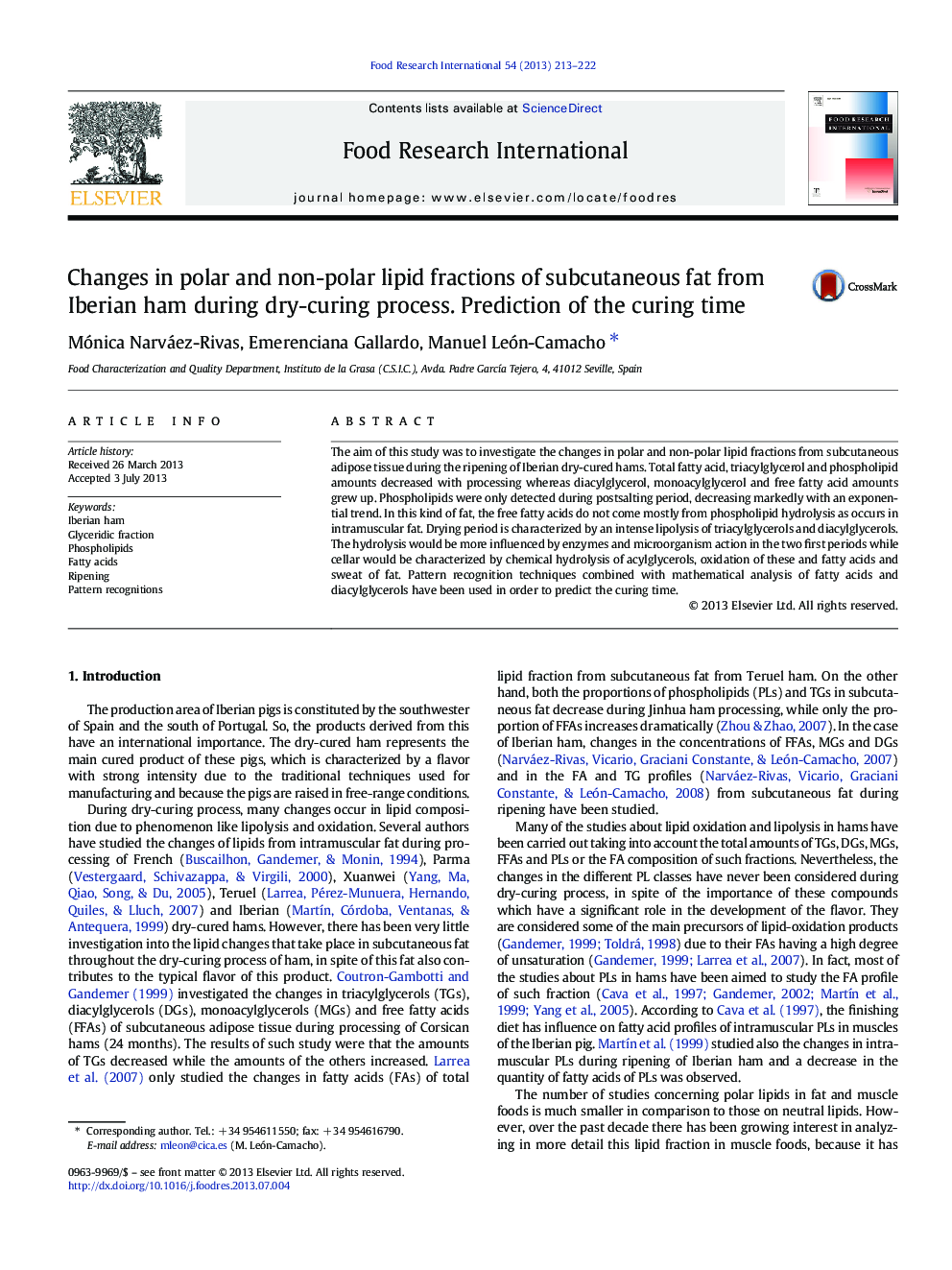| Article ID | Journal | Published Year | Pages | File Type |
|---|---|---|---|---|
| 6397223 | Food Research International | 2013 | 10 Pages |
â¢Phospholipids were only detected during postsalting showing an exponential decrease.â¢Hydrolysis is influenced by enzymes and microorganism action in two first periods.â¢Cellar is characterized by chemical hydrolysis and oxidation and sweat of fat.â¢Pattern recognition techniques were used to discriminate between ripening periods.
The aim of this study was to investigate the changes in polar and non-polar lipid fractions from subcutaneous adipose tissue during the ripening of Iberian dry-cured hams. Total fatty acid, triacylglycerol and phospholipid amounts decreased with processing whereas diacylglycerol, monoacylglycerol and free fatty acid amounts grew up. Phospholipids were only detected during postsalting period, decreasing markedly with an exponential trend. In this kind of fat, the free fatty acids do not come mostly from phospholipid hydrolysis as occurs in intramuscular fat. Drying period is characterized by an intense lipolysis of triacylglycerols and diacylglycerols. The hydrolysis would be more influenced by enzymes and microorganism action in the two first periods while cellar would be characterized by chemical hydrolysis of acylglycerols, oxidation of these and fatty acids and sweat of fat. Pattern recognition techniques combined with mathematical analysis of fatty acids and diacylglycerols have been used in order to predict the curing time.
